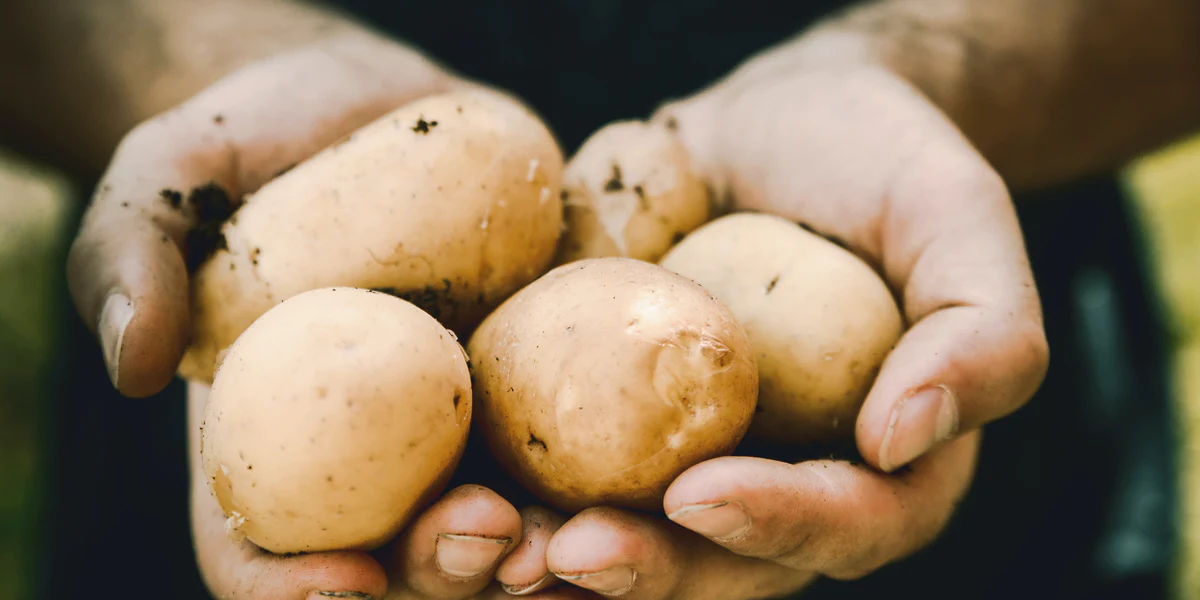Once again, I find myself delving into the realm of potato cultivation. This time around, it’s all about growing potatoes in a garden bed with the help of hay (or straw).
I’m back at it, tackling the challenge of growing potatoes in the most efficient and perhaps easier way possible. The underlying motivation remains consistent: finding methods that yield more pounds of potatoes per square foot compared to traditional techniques.
Aiming for Bountiful Harvests
From a survival preparedness perspective, potatoes are a jackpot vegetable due to their high calorie content. They’re an excellent addition to any “Survival Garden.”
In my wildest dreams, I envision harvesting around 5 pounds per plant. If my optimistic hopes come true, a 4×8-foot (18″ tall) garden bed might yield an impressive ~100 pounds of potatoes! (I’ll provide more details below on the number of potatoes I’ve planted in each bed).
Choosing the Right Spuds
I’ve opted for Kennebec potatoes as my preferred variety. Having grown them before, I’m well aware of their excellent storage capabilities, even lasting longer than other types when stored in a cool, dark spot. These potatoes have stayed fresh from October until the following April. Plus, they’re ideal for canning, a strategy I plan to employ with this year’s harvest.
Growing Potatoes in a Garden Bed with Hay, the Reagan Way
Building Up with Tall Garden Beds
To accommodate the hay mulch as the potatoes grow, I constructed two 4x8x18-inch garden beds using 2×10 pressure-treated lumber. The extra height ensures that there’s ample space for the tubers to grow into the hay layer.
Prepping the Soil Bed
Before anything else, I also tackled the existing sod by using a rototiller to turn it over. After removing the sod chunks and rocks, I gave the area another pass with the rototiller.
Once the garden beds were in place and level (I can’t stand uneven beds), I added more soil using my trusty tractor. The goal was to create a loose soil layer of about 4-6 inches for the seed potatoes to establish their roots.
Prepping the Seed Potatoes
Around 8 weeks ago, I acquired a batch of Kennebec seed potatoes. When I was ready to begin this project (now that the threat of frost is behind us), I removed the potatoes from the bag. Those with multiple growth eyes got sliced for additional cuttings, a week later, once the cut skin had toughened. This precaution helps prevent disease or rot when planted.
For whole potatoes, plant them with the growing tips facing upward.
Planting Density
Hold on tight for this one – I planted a whopping 24 potatoes in each 4×8-foot garden bed. That’s three rows of eight potatoes each. It might sound like a lot, but I’m eager to see how it turns out.
My Planting Process
I prepared each planting hole by adding a bit of composted cow manure to the bottom. I’ve seen promising results in rooting and plant growth from this technique, based on experiments I’ve seen online.
Mulching with Hay
With the potatoes snugly in place, I covered them with soil and gave it a gentle watering. Then, I introduced the first layer of hay, about 3-4 inches thick, and gave it a spritz of water.
Continuing with the Garden Hay Method
The plan moving forward is to wait until I see new potato shoots breaking through the hay. Once they’re 3-6 inches above the hay, I’ll cover them again. The goal is to encourage new shoots and tubers to develop within the hay layer.
It’s crucial to maintain moisture in the hay without saturating it. Deeper layers of hay seem to retain moisture better, but intense sun might influence this. I’ll be monitoring closely and hoping for just the right balance of rainfall.
Stay tuned for more updates.

